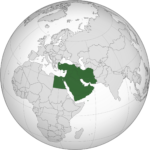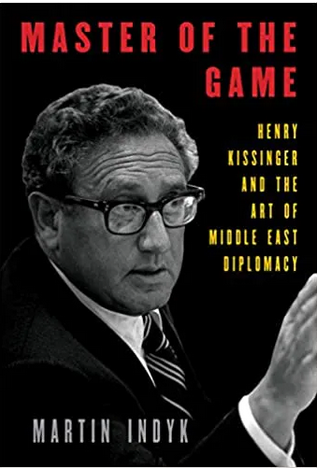In praise of Henry Kissinger’s Middle East legacy
Few careers in American public life have been as long and consequential as Henry Kissinger’s. From his emergence as one of the first “defense intellectuals” of the Cold War, appearing on Mike Wallace’s interview show in the 1950s, to his recently published book with Eric Schmidt of Google on the societal impact of artificial intelligence, Kissinger’s life in the public spotlight has spanned more than six decades. As national security adviser and secretary of state he presided over the opening to China, detente with the Soviet Union and the end of the Vietnam War. Leaving office in 1977, he became a public commentator and international business consultant, as well as a behind-the-scenes influence in American foreign policy. Although a recipient of the Nobel Peace Prize, he remains an exceptionally controversial figure because of policies in Cambodia, Chile and South Asia and a target of hatred, especially on the left. When his younger brother, Walter, died last year, the hashtag “the Wrong Kissinger” trended on Twitter.
Martin Indyk has written a fascinating, comprehensive and detailed study of what may be Kissinger’s most decisive and important achievement. In the aftermath of the Yom Kippur War in 1973, whose cease-fire he had helped to arrange, Kissinger engaged in his signature “shuttle diplomacy,” forging three disengagement agreements between Israel and Egypt and Israel and Syria, and helped create the basis for peace in the Middle East. As the book’s title, “Master of the Game: Henry Kissinger and the Art of Middle East Diplomacy,” indicates, Indyk praises Kissinger’s role in these talks, describing his skills as a brilliant and tireless negotiator and attributing the durability of this peace to Kissinger’s emphasis on establishing an international order rather than a comprehensive peace. This reflects the intellectual Kissinger’s realpolitik approach to international relations; his goal was to establish a stable balance of power in the Middle East by “the skillful manipulation of the antagonisms of competing forces.”
What really sets this book apart from other academic studies is that Indyk is a very unusual historian. In carrying out the traditional archival research in the United States and Israel, mastering the memoir and secondary literature, and conducting interviews with surviving participants, Indyk provides a precise rendering and a literal day-to-day account of Kissinger’s diplomacy in the region. However, having served as a former ambassador to Israel, an assistant secretary of state for Near East affairs and a special assistant to Presidents Bill Clinton and Barack Obama, Indyk is also a remarkably experienced diplomat with a deep engagement in the Middle East. The book’s narrative frequently toggles between Kissinger’s efforts in the 1970s and Indyk’s later experiences in trying to deal with this troubled region. In his prologue, Indyk writes that while he would not compare himself to Kissinger, “I believe I came to understand what it was like for him.”
Although Indyk largely worked for Democrats and was critical of President Donald Trump’s Middle East policy, it is surprising in these politically polarized times to find that his review of Kissinger’s approach to Middle East diplomacy is much more favorable than those of the presidents he worked for. Indyk contrasts Kissinger’s success in handling Syrian President Hafez al-Assad with the Clinton administration’s failure to get an Israeli-Syrian peace treaty. He also compares Kissinger’s triumph in the Sinai II negotiations, which brought about the first significant Israeli withdrawal from conquered Arab territory and cemented America’s new ties with Egypt, with the Obama administration’s unsuccessful attempt to broker a two-state solution to the Israeli-Palestinian conflict.
Indyk has his criticisms of Kissinger. He judges Kissinger harshly for ignoring Egyptian President Anwar Sadat’s signals that he was interested in a deal with Israel before the outbreak of war in October 1973. He believes that Kissinger missed an opportunity in early 1974 to engage Jordan’s King Hussein in the peace process in a manner that would have allowed Jordan, instead of the Palestine Liberation Organization, to represent the Palestinians. Jordanian control of the West Bank might have allowed an eventual Israeli withdrawal in a way that the PLO has not. Kissinger’s hesitation allowed PLO leader Yasser Arafat to gain additional Arab support, and at the Rabat summit in October 1974 the PLO was designated the sole representative of the Palestinians.
Even Kissinger had regrets about not negotiating with Jordan. But this outcome was hard to see as a real lost opportunity for a settlement of the Palestinian question. As Indyk shows, Kissinger was distracted at the time: Watergate was severely weakening President Richard Nixon, detente was facing congressional challenges, and both Sadat and Israel’s Prime Minister Yitzhak Rabin were unenthusiastic about the potential of the Jordan talks.
Indyk notes that in Nixon’s memoirs the president said he did not initially put Kissinger in charge of the Middle East because his “Jewish background” would be a liability in dealing with the Arab states. Kissinger believed that Nixon, whose antisemitism was evident in the White House tapes, kept him away from the Middle East because “my Jewish faith might warp my judgment.” Indyk argues that although Kissinger is often seen as a coldblooded realist, on Israel he was a “sentimentalist.” Having lost 13 members of his family to the Nazis and having liberated a concentration camp as an American soldier, he had a personal and emotional connection to the Jewish state that was different from his dealings with other countries. Indyk describes his relationship with Israeli leaders as “fraught and complicated,” and there is certainly proof of that in the endless hours of negotiations and bitter disagreements over a “reassessment” of the U.S.-Israeli relationship after Kissinger’s first attempt at a Sinai agreement failed in March 1975. Ironically enough, Kissinger was strongly criticized at the time by Israelis, many of whom now acknowledge that his peacemaking approach ensured Israel’s survival and prosperity.
Some critics have argued that Indyk’s book is overly generous and that whatever Kissinger’s contribution to the Middle East, his diplomacy did not ultimately serve America’s national interests. As one reviewer put it, because of Kissinger’s diplomacy, the United States “bought itself burdensome dependents and many hostile adversaries.” This critique is unfair and shortsighted. Although U.S. relations with Israel have become a more contentious issue, especially because of former prime minister Benjamin Netanyahu’s close ties to the Trump administration, it is important to maintain a historical perspective. As Indyk notes, Kissinger’s approach eliminated an existential threat to Israel in removing Egypt from the Arab states aligned against her. In tightening relations with Israel, the United States developed a close alliance with a pro-Western democratic state that shares its values and has become the true superpower of the Middle East. This policy has consistently enjoyed strong support from a large swath of the American people, who have viewed Israel as a reliable friend of the United States. The alliance, in most people’s eyes, is in the U.S. national interest. Israel is increasingly tolerated, and in some cases even accepted, by Arab countries because of its power and technological and economic prowess. Along with the rebuilding and democratization of Germany, Japan and South Korea, the survival and success of Israel should be seen as one of the genuine historic accomplishments of an enlightened American diplomacy, and as Indyk makes clear, Kissinger deserves a great deal of the credit
Thomas Schwartz is a professor of history and political science at Vanderbilt University and the author of “Henry Kissinger and American Power: A Political Biography.”
Master of the Game
Henry Kissinger and the Art of Middle East Diplomacy
By Martin Indyk

